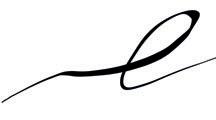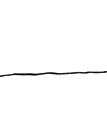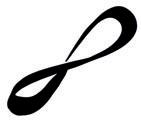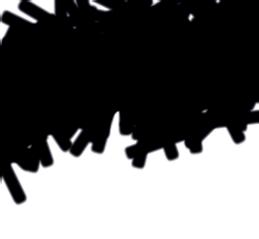NORDIN
Emerging from Currents and Waves
for Orchestra and Live Electronics
Full Score















Part I : Currents Part II : Emerging Part III : Waves (2020 Version) for Orchestra and Live Electronics
POD PETERS on demand
LEIP ZI G L ONDO N NE W YOR K
Sample Player
3 Flutes
3 Oboes
2 Clarinets (2:nd Cl also Bass Cl)
Bass Clarinet (also Contrabass Clarinet)
2 Bassoons
Contrabassoon
4 Horns in F
3 Trumpets in C
2 Trombones
Bass Trombone
Tuba
Timpani
2 Percussion
1)Crotales (played with bow), large Gran Cassa, large tam-tam and vibraphone (played with bow)
2)Crotales (played with bow), large Gran Cassa and three mid to large tom-toms
Harp
Piano (also played with mallets and drum sticks)
Violin I
Violin II
Viola
Violoncello
Contrabass
Quarter tone notation
All live electronics in this movement are controlled by the conductor with the help of two Kinect motion sensor cameras, one for the left hand and one for the right hand. There are two types of electronics in Currents - ”Sample Player” and ”Freeze”. They work like this:
- Triggers large rattling sounds (recordings from inside of a grand piano).
- High notes triggers louder and richer sounds
- Low notes trigger somewhat softer sounds
- When you keep your hand longer in the Kinect motion camera you trigger a long rumbling resonance
- Dynamic is controlled by the amount of your hand/arm that is seen by the Kinect motion camera (the number of pixels ”active”)
- When moving your hand side ways you affect the pan of the sounds
Freeze
- When you enter the Kinect camera area you start the Freeze, which records and freezes the sound of the orchestra.
- The left hand freezes the left half of the orchestra (except the clarinets)
- The right hand freezes the right half of the orchestra (plus the clarinets)
- The placements of the hand inside the area will define the global spatialization of the frozen sound.
- When you reach the far low end on both sides the sound is sent to the prepared tam-tams that will start to resonate and rattle.
When you stand very closely to something that is transforming - a butterfly emerging from its cocoon or the emergence of completely new phenomena like social networks or virtual reality - you can seldom understand what it will become just by looking at it. You might be able to imagine some of the implications, but you will not know for sure until afterwards. Music, art, culture and the society at large is in a state of transformation at the hands of technology, and we who stand in the middle have very limited possibilities of predicting the outcome.
The amazing thing with art is that you can ask questions and paint visions at the same time. Where is music and art heading? Can the endless possibilities of technology become a bridge to the depth of tradition? Can we use emerging technologies to democratize expression while still choosing excellence over amateurism? How can the immense scope of potential in technology coexist with our limited physicality?
Emerging from Currents and Waves is part of a collaboration between conductor Esa-Pekka Salonen, clarinet soloist Martin Fröst and composer Jesper Nordin where they delve into the possibilities of emerging technologies in music. With the help of other musicians, orchestras and artists from other fields they will create visions of the future of music. Currents is the first movement of this large scale piece, that in full lasts for one hour.
Co-commissioned by The Swedish Radio Symphony Orchestra, Orchestra Philharmonique de Radio France and IRCAM/Centre Pompidou
Duration (Currents): 1 Min.
(breathewhennecessarytakeshort,activebreaths)
(breathewhennecessarytakeshort,activebreaths)
(breathewhennecessarytakeshort,activebreaths)
(breathewhennecessarytakeshort,activebreaths)
(breathewhennecessarytakeshort,activebreaths)
(breathewhennecessarytakeshort,activebreaths)









=placeadrumsticksoftlyonthe resonatingstringstoproducearattling sound-withoutstoppingtheresonance
BESETZUNG/ORCHESTRATION
2Flutes
2Oboes
2Clarinets
2Bassoons
HornsinF
2TrumpetsinC
Percussion
Large Gran Cassa, three mid to large tom-toms, large tam-tam and vibraphone (played with bow)
SoloClarinet GestrumentcontrolledwithKinectmotionsensor
ViolinI
ViolinII
Viola
Violoncello
DoubleBass
Quartertonenotation
Co-commissionedbyTheSwedishRadioSymphonyOrchestra, OrchestraPhilharmoniquedeRadioFrance,IRCAM/CentrePompidou, SaintPaulChamberOrchestraSociety,OsloCamerata, RoyalStockholmPhilharmonicandSwedishChamberOrchestra





















(nodiminuendo)
UseClarinettoplayonGestrument (withyourbacktowardstheaudience)
Gestrument: Preset"02-ClarinetChoirWild" irWild
(nodiminuendo)


(nodiminuendo)
(nodiminuendo) (nodiminuendo) (nodiminuendo)
(nodiminuendo)
(nodiminuendo)
(nodiminuendo)
(nodiminuendo)























































(use

IfEmergingisperformedasastandalonepiece: Improviseoverfolkmusicmaterialthat mergeswellwiththepreset04HarpsandPianos
IfEmergingisperformedasastandalonepiece: Changegraduallybetweenpreset03ViolentOrchestra andpreset04HarpsandPianos.Alsofaderangetominimum.
3 Flutes
3 Oboes
2 Clarinets
Bass Clarinet
2 Bassoons
Contrabassoon
4 Horns in F
3 Trumpets in C
2 Trombones
Bass Trombone
Tuba
Timpani
2 Percussion
1)Large Gran Cassaand three mid to large tom-toms
2)Vibraphone (played with bow), large Gran Cassa and three mid to large tom-toms
Harp
Piano (also played with mallets and drum sticks)
Violin I
Violin II
Viola
Violoncello
Contrabass
Quarter tone notation

Live Electronics
All live electronics in this movement are controlled by the conductor with the help of two Kinect motion sensor cameras, one for the left hand and one for the right hand. There are four types of electronics in Waves - ”Auto looper”, ”Gestrument”, ”Spat looper” and ”Freeze”. They work like this:
Auto looper (only with Left hand)
- When you enter the Kinect camera area the computer detects attacks in the individual sections and makes loops between the attacks it finds.
- When your hand is low, there are fewer loops (minimum two per section)
- When your hand is high, there are more loops (maximum sixteen per section)
- You can affect the spatialization by moving your hand sideways
Gestrument
- When you enter into the Kinect camera area you control the app Gestrument that lets you play on virtual orchestras in real time.
- As a simplified explanation you play low pitches with your hand low, high pitches with your hand high, slow rhythms to the left and fast rhythms to the right.
- Dynamic is controlled by the amount of your hand/arm that is seen by the camera (the number of pixels ”active”)
- All sound banks are described in the score, and you can either give a sign to have them changed or let the tech team decide when it’s time to change them.
Spat looper
- When you enter the Kinect camera area you start a loop recording, when your hand exits the loop recording ends and playback of the loop begins.
- The movement of your hand while recording the loop defines the spatialisation of the sound around the audience.
- The left hand records the left half of the orchestra
- The right hand records the right half of the orchestra
Freeze
- When you enter the Kinect camera area you start the Freeze, which records and freezes the sound of the orchestra.
- The left hand freezes the left half of the orchestra (except the clarinets)
- The right hand freezes the right half of the orchestra (plus the clarinets)
- The placements of the hand inside the area will define the global spatialization of the frozen sound.
- When you reach the far low end on both sides the sound is sent to the prepared tam-tams that will start to resonate and rattle.
BlankPage
Lefthandpizzadlib (softandnottooactive) Lefthandpizzadlib (softandnottooactive)
Gestrument
GestrumentPresetRH1: Righthandusesafullorchestrawithmultipleplaying techniquesthatchangeaccordingtointensity. ThetonalityisbasedonatraditionalSwedishfolktune.
GestrumentPresetLH1: Lefthandusesafullorchestrawithlegatoplaying. ThetonalityisbasedonatraditionalSwedishfolktune. Thethicknessofthelineisanindicationof therelativedynamicsofthephrase.
GestrumentPresetRH2: Righthandusesthesameorchestraasbefore,butwithdifferentpulse patternsthatareclearlyheardwhenkeepingthehandstillinoneposition.
GestrumentPresetLH2: Lefthandusesthesameorchestraasbefore,butwithdifferentpulse patternsthatareclearlyheardwhenkeepingthehandstillinoneposition.













BlankPage




non-rhythmic IVIIIIIIII
legatopossibile, non-rhythmic IVIIIIIIII legatopossibile, non-rhythmic IVIIIIIIII legatopossibile, non-rhythmic IVIIIIIIII legatopossibile, non-rhythmic IIIIIIII
legatopossibile, non-rhythmic IIIIIIII
Jämtländskbrudvals (traditional Swedish folk tune)
Playthismelodyfreelyandslowly,improvise togetherwiththetwofrozenchordsoftheconductor
smallglissadlibonIVandIII
smallglissadlibonIVandIII
smallglissadlibonIVandIII
smallglissadlibonIVandIII
smallglissadlibonIVandIII
smallglissadlibonIVandIII

For more than 200 years, Edition Peters has been synonymous with excellence in classical music publishing. Established in 1800 with the keyboard works of J. S. Bach, by 1802 the company had acquired Beethoven’s First Symphony. In the years following, an active publishing policy enabled the company to expand its catalogue with new works by composers such as Brahms, Grieg and Liszt, followed in the twentieth century by Richard Strauss, Arnold Schoenberg and John Cage.
Today, with its offices in Leipzig, London and New York publishing the work of living composers from around the world, Edition Peters maintains its role as a champion of new music. At the same time, the company’s historic and educational catalogues continue to be developed with award-winning critical and pedagogical editions.
Seit über 200 Jahren steht die Edition Peters für höchste Qualität im Bereich klassischer Notenausgaben. Gegründet im Jahr 1800, begann der Verlag seine Tätigkeit mit der Herausgabe von Bachs Musik für Tasteninstrumente. Schon 1802 kamen die Rechte an Beethovens erster Sinfonie hinzu. In der Folgezeit wuchs der Katalog um neue Werke von Komponisten wie Brahms, Grieg und Liszt sowie – im 20. Jahrhundert –Richard Strauss, Arnold Schönberg und John Cage. Als Verleger zahlreicher zeitgenössischer Komponisten aus aller Welt ist die Edition Peters mit ihren Standorten Leipzig, London und New York auch weiterhin Anwalt neuer Musik. Zugleich wird das Verlagsprogramm im klassischen wie im pädagogischen Bereich kontinuierlich durch vielfach preisgekrönte Ausgaben erweitert.